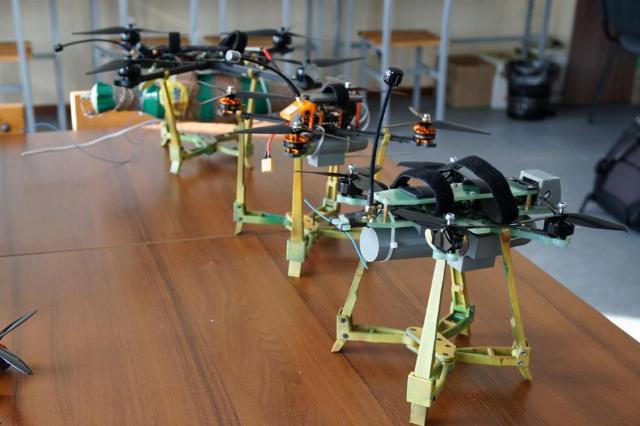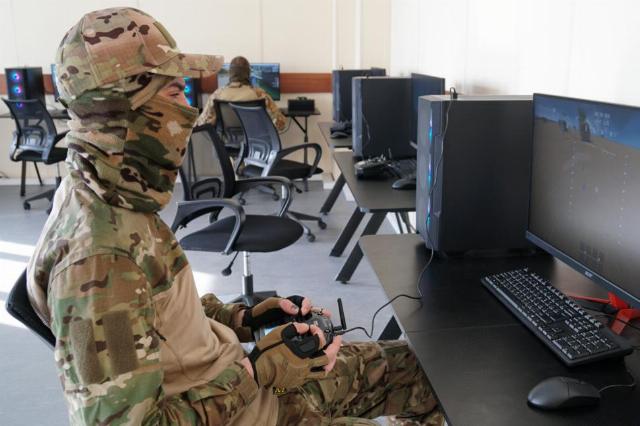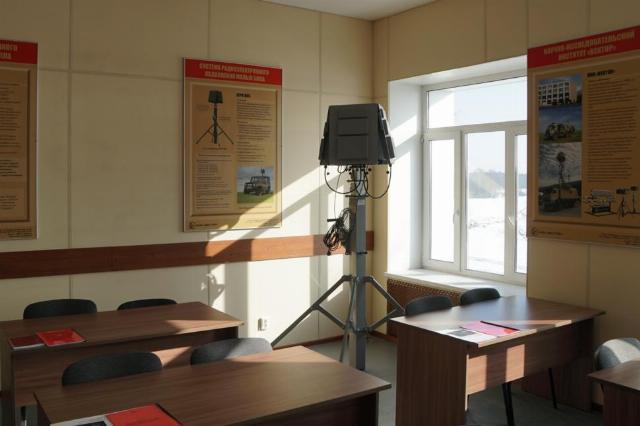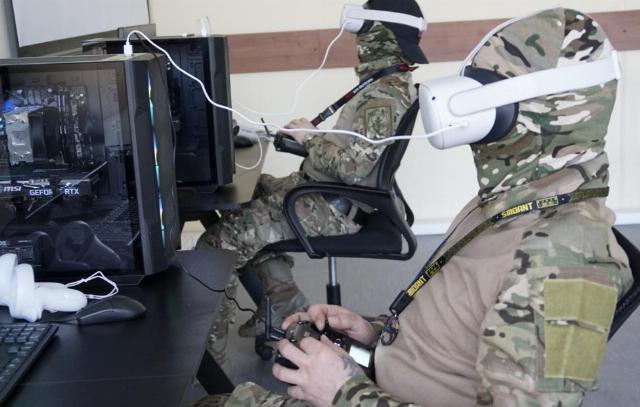News about the effective use of UAVs by our troops during a special military operation (SVO) comes daily. Air assistants are involved today in the interests of almost every unit at the forefront. At the same time, in some cases, UAVs have long since turned not into an auxiliary reconnaissance, but into a combat vehicle (take the same FPV drones). In fact, the active use of various types of drones during its operation has become one of the signs of the changed tactics of warfare, evidence of the practical implementation of updated approaches and technologies of modern combat.
Recently, a new military accounting specialty has been introduced in the Armed Forces of the Russian Federation - the UAV operator. During the training of specialists in this profile, not only the use of their drones is practiced, but also countering enemy drones. One of the first to master such a hybrid program was started at the district training center of the Leningrad Military District. This training project was implemented here with the participation of the Vector Research Institute (as part of the Rostec State Corporation's Roselectronics holding), the largest Russian developer and manufacturer of various UAV detection and counteraction systems.
First-person control
Here they teach how to fly on FPV drones (from the English First Person View - "first person view"). The cadets have four classrooms equipped with everything they need. For example, in the gym class, classes are held on 15 computers with simulators, and there are also two Sky-type simulators. In addition, classes for UAV counteraction, topography and maintenance are equipped for students. Practical classes are held at one of the training grounds of the Leningrad Military District.
It should be understood that if no specific skills are required to control common commercial copters (such as DJI Mavic, Autel and others), then special skills are needed to control FPV drones. That is why about 30 military personnel undergo full-fledged training under this program every month. Most of them are combatants who arrived from the areas of the special operation to improve their skills or master a new specialty. Recruits who have entered military service under contract and are preparing to join the ranks of the Armed Forces are also trained here.
At the same time, as the instructors of this training center note, not all trainees eventually become UAV control specialists. If the qualification does not reach the required level, students are offered to focus on training in other areas, for example as a technician. The craftsmen in the unmanned aviation units are always in demand.

© JSC "Research Institute "Vector"
Image source: © JSC "Research Institute "Vector"
At one of the training places, the cadets master the skills of drone maintenance. "Our task is to teach people not only to fly, but also to set up the device and even repair it in case of malfunction," explains the commander of the training platoon of UAV operators.
He notes that according to the results of the training, the center graduates specialists, in fact, of a wide profile.
commander of the training platoon of UAV operators
Non-stop training
Classes at the training center are held daily and seven days a week. About a quarter of the entire educational process is devoted to theory, the rest is practical training. There are many instructors who have combat experience gained during their participation in the SVO. Many professionally follow trends in the development of unmanned aviation, monitor news related to the use of drones in the special operation zone, trying to introduce certain interesting findings into training.

© JSC "Research Institute "Vector"
Image source: © JSC "Research Institute "Vector"
"We are studying the information that the enemy puts into open access," says the commander of the training platoon of UAV operators. — In addition, we are in constant contact with our graduates: they immediately inform us if something new has appeared somewhere on the LBS, and we already take this into account in the course of classes here. In general, we are doing everything to ensure that people leave our training center as prepared as possible."
At the training ground, students are divided into pairs: one controls the drone in the sky, while a partner on the ground prepares the device for the next launch. Practice has suggested that it is better to send for training those specialists who already serve together. This helps in terms of strengthening communication skills and honing interaction. Such guys, as they say, understand each other perfectly. In recent months, an order has been introduced in the training of UAV operators, in which calculations are no longer prepared by individual specialists, but immediately. Directly during the training process, military personnel undergo coordination, that is, they are sent to the special operation zone fully ready for combat work.
"Ultimately, we need to release a well—coordinated crew that should be ready to perform any task immediately after graduation, without wasting time on lapping each other on the spot," the instructors of the training center note. — It's no secret that in combat, personnel often communicate with gestures. That's why guys have to learn to understand each other from a half-glance."
A variety of people come to this training center of the Leningrad Military District for training. There are also quite "green" beginners, but it happens that recognized masters of their craft come to check themselves.
instructor of the training center
By the way, during the training at this training center there is a constant exchange of experience. Those nuances are transmitted, which later turn out to be not superfluous even in the piggy bank of knowledge of experienced specialists.
The shield and sword of unmanned aircraft
The educational process at this center has incorporated two key areas — the actual use of drones and countering them. In the second case, the unique developments of the Vector Research Institute are used as a textbook, including those that are already actively used to protect critical infrastructure facilities from UAV attacks.
"We are talking, among other things, about the Serp-VS5 and Serp-VS6 complexes supplied by the Vector Research Institute (automated devices for electronic suppression of small drones — approx. TASS), — says Igor Pavlov, head of the laboratory of monitoring systems at the Institute. "It is interesting that one of them is used not only for educational purposes, but also for practical purposes — to protect the training center itself."

The Serp-VS5 complex
Image source: © JSC "Research Institute "Vector"
Students also master the use of anti-drone guns using the example of the Dnepr devices designed to suppress communication channels, control and navigation of UAVs. Of the guns on the market today, these guns are among the lightest in weight, but they are able to provide counteraction to drones in five frequency bands at once.
Igor Pavlov
Head of the Laboratory of Monitoring Systems of the Research Institute "Vector"
The instructors of this training center positively assess the comprehensive training program, which allows you to teach not only the management of drones, but also the possession of means of detecting and countering drones. "Time dictates the need to be able to use any device," says the commander of the training platoon of UAV operators. — Our specialist must be able to fly, understand how to detect and suppress an enemy drone, and have the skills to work with appropriate equipment. All this will come in handy in real combat."
Today, representatives of the Vector Research Institute continue to advise the instructors of the training center and provide them with the necessary technical support. "We interact regularly. In the future, we believe that the number of students can even be increased. Cook not 30, but 60 or even 90 people. If necessary, we will equip several classes equipped with our anti—UAV devices," Pavlov emphasizes.
The specialists of this institute did not just provide textbooks — they developed an educational and methodological program on anti-UAVs, equipped one of the classrooms, and conducted classes with the teaching staff. It is appropriate to note that Alexander Drozdenko, the Governor of the Leningrad Region, contributed to the launch of the new program. It was he who initiated the organization of a class on drone control. In turn, the specialists of the Vector Research Institute proposed to equip a class for detecting drones and countering them. In the future, according to representatives of the institute, the curriculum in terms of working out ways to protect against UAVs should be expanded and supplemented. In addition, the Vector Research Institute believes that it is necessary not only to be able to operate equipment, but also to understand the very basics of electronic warfare (EW) in order to apply them more effectively.
Igor Pavlov
Head of the Laboratory of Monitoring Systems of the Research Institute "Vector"
It takes several classes for future drone operators to practically master the means of detecting and countering UAVs. Each lesson is generally arranged in such a way that one part of the training group flies, and the second one "lands" the devices using means of suppression, including the aforementioned "Sickle" complexes and anti—drone guns "Dnepr".
By the way, UAV operators are mastering the specifics of using their devices in terms of countering interference. "Let's say there were control delays during the flight, according to the video signal," says one of the instructors, "so you either have to lower the device lower or go to the side. This is an important moment."
Up to 10-15 people are involved in practical exercises at the training ground at the same time. This is how the learning process is carried out with maximum efficiency. "We need to have time to charge the batteries. In addition, if there are three dozen vehicles in the sky at the same time, it will be a pile—up," says the commander of the training platoon.
The theoretical training is going according to its plan. "There are technical issues, they also need to be studied," platoon notes. — And even before the first real flights, it is mandatory to undergo training on simulators — a total of about 50 hours. The time of each lesson is regulated: two hours — theory, the same amount — training on simulators."
The platoon commander notes that today priority is given to the safety of UAV operators. For example, calculations are now increasingly using repeaters that allow launching remotely from shelters. There are also advances in terms of the organization of repair, maintenance, and firmware of drones. There are more and more specialists capable of performing such manipulations.
Now the use of FPV drones in the course of its own has become a daily practice. It is no coincidence that experienced professionals are already competing in the mastery of jewelry ownership of their drones.
"One of our graduates managed to send his drone clearly into the door of the basement room where the enemy was, and the signal from the device was already very weak," the commander of the training platoon shares the results of the combat work of one of his pupils. — The drone was equipped with a powerful charge, as a result, it was possible to destroy a large number of enemy manpower. But this specialist studied with us practically from scratch."
Ekaterina Adamova

